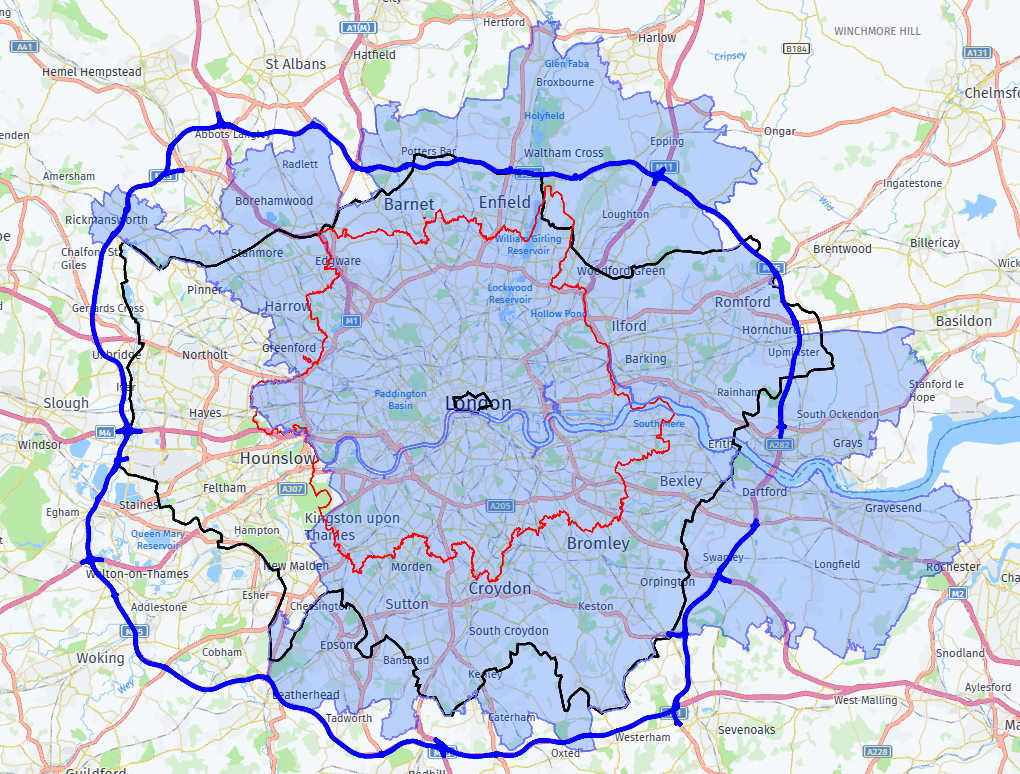One of the more popular pages on the site is the postcodes in the City of London administrative area. This confused me for a while since the City of London is a small area that is important for financial services but not much else. I came to the conclusion that it was based on people trying to find a list of all London postcodes so I added a link to a more comprehensive page of London postcodes. But then I wondered if that was really what people would want from a list of London postcodes and where in fact London ends. So here's a brief description of what the options are.
The City of London administrative area does closely line up with what was considered London several hundred years ago. It's now more commonly known as the Square Mile and as you'd guess from the name, it's tiny. It's the smallest black area in the map above
This list of London postcodes is a list of postcodes that are considered to be in the London post town and consists of the E, EC, N, NW, SE, SW, W and WC postcode areas. I guess when those postcode areas were created, that may have been considered the extent of London, but I don't think anyone would think that now, Wembley Stadium and Heathrow Airport are both outside it. It's the red area in the map.
The larger black area above is the area covered by the Greater London Authority, which is probably what most people would consider as London these days. You can download data for this area here
But even that may not be enough. Maybe you think anything inside the M25 is London. Certainly London's urban sprawl now extends beyond the boundary of the GLA. I don't currently have data for this but it's on my To Do list. It's the blue area above.
But the urban sprawl extends beyond the M25 in places, so maybe that doesn't really define the boundary. What about the area where people mostly work in London? The London Travel to Work Area data is here and is shown above as the blue shaded area. That gives a completely different area than the others, with a big chunk taken out of the Western side by areas where people work in Slough and Heathrow, rather than London.
So to answer the original question, where does London end? It's not really clear. Sorry I've not been more helpful, but maybe it will help you decide which specific London data you should download
